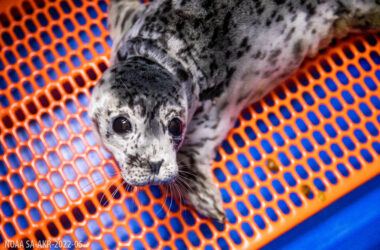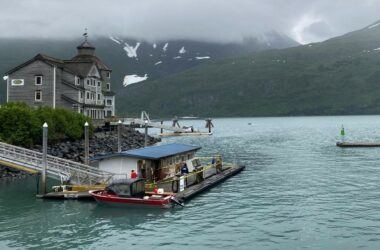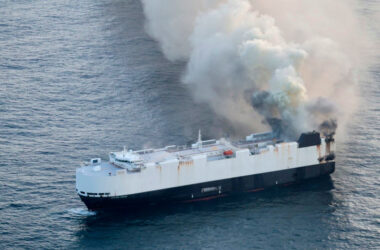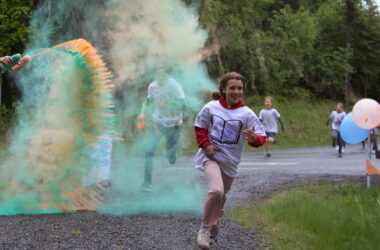The Kenai Watershed Forum held a presentation on Wednesday, March 13th to share their initiative to help rehabilitate a degraded shoreline at a Kenai and Soldotna Joint Chambers of Commence Luncheon.
The speakers of the day were Ben Meyer and Brandon Drzazgowski.
The area of concern is at Mullen Parcel, at the mouth of Soldotna Creek.
Mullen Parcel used to be owned by the Mullen Family, but in 1999, the land was then subjected to the Conservation Easement held by the Kachemak Heritage Land Trust.
Currently, it is owned by the Alaska Department of Fish and Game and Alaska State Park.
The current issues with the land are vegetation trampling, accelerated erosion, and an accumulation of litter.
According to Brandon Drzazgowski, he says that the way to fix this problem is streambank restoration, site monitoring, and education.
The first task is to start spruce tree cabling.
In order to make this work, anchors and cables have to be installed into the riverbank, and then some trees and branches get fixed in the water. Thus, this process is able to slow down passing water, trap sediment, and help protect fish who are passing by.
Drzazgowski says that this is very similar to a project that they worked on back in 2019. The reason they are doing it again is because typically the branches from the trees should be replaced every three years.
The team is also planning on doing some revegetation with native species this spring.
“We’re going to use native vegetation there with healthy root systems to kind of hold that soil in place so that further degradation doesn’t happen,” said Drzazgowski.
Something else that Drzazgowski says he would like to do is add signage to showcase that there is no bank fishing allowed within 10 feet of the bank.
“A lot of this degradation that’s happened has come because people are uninformed on this topic. And like to fish on that bank, they walk up and down there on that sensitive vegetation and kind of turn it into just mud which we talked about just kind of gets washed away,” said Drzazgowski.
Site monitoring will also be done. This occurs when photos from the previous year are brought back to try and track the new growth.
The final step is education.
Drzazgowski says that the more people can be informed about the effort the better. This will allow community members to avoid the area to ensure that further damages are not caused.
The Kenai Watershed Forum also invites individuals to help out and volunteer as a way to further their preservation conversation efforts.
For more information about the Kenai Watershed Forum and their ongoing projects, find “Kenai Watershed Forum” on Facebook or visit kenaiwatershed.org.






